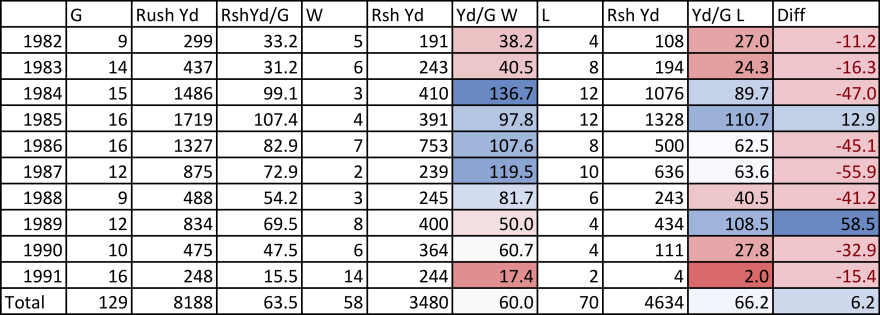Unraveling The Simpson’s Paradox Examples In Sports: How To Avoid Misleading Data And Make Informed Decisions
Simpson’s Paradox Examples in Sports: Unveiling The Truth Behind Deceptive Statistics
As a sports enthusiast, I have always been fascinated by the way data and statistics are used to analyze the performance of athletes and teams. However, in recent years, I have come across a fascinating phenomenon called Simpson’s Paradox, which has made me question the accuracy of some of the conclusions that are drawn from sports statistics. In this article, I will explore some of the most notable Simpson’s Paradox examples in sports and shed light on how this paradox can be both deceptive and revealing at the same time.
What is Simpson’s Paradox?
Simpson’s Paradox is a statistical phenomenon in which a trend or pattern appears in different groups of data, but disappears or reverses when those groups are combined. In other words, a relationship that exists within subsets of data can be masked or even reversed when the subsets are combined.
2 Picture Gallery: Unraveling The Simpson’s Paradox Examples In Sports: How To Avoid Misleading Data And Make Informed Decisions
For example, let’s say we have two basketball players, Player A and Player B, who are competing for a spot on their team’s starting lineup. Player A has a higher scoring average overall, but Player B has a higher scoring average in games against top-ranked opponents. If we look at the data as a whole, it might appear that Player A is the better scorer. However, if we separate the data by opponent ranking, we might find that Player B has a better scoring average against tougher opponents.
Who is Affected by Simpson’s Paradox?

Image Source: ytimg.com
Simpson’s Paradox can affect anyone who works with data, including statisticians, analysts, coaches, and players. In sports, it is often used to compare the performance of different teams, players, or tactics. However, it is important to be aware of the limitations of this paradox and to use it in conjunction with other statistical tools to draw accurate conclusions.
When and Where is Simpson’s Paradox Most Likely to Occur in Sports?
Simpson’s Paradox is most likely to occur in sports when the data is divided into subsets that have different sizes or weights. For example, if we compare the batting averages of two baseball players, one who played in a small ballpark and one who played in a large ballpark, the data might be skewed by the size of the ballparks. Similarly, if we compare the win-loss records of two basketball teams, one who played an easier schedule and one who played a tougher schedule, the data might be skewed by the strength of the opponents.
Why is Simpson’s Paradox Important to Understand in Sports?
Simpson’s Paradox is important to understand in sports because it can help us avoid drawing false conclusions from data. By separating the data into subsets and analyzing it from different angles, we can uncover hidden trends and patterns that might not be visible in the overall data. This can lead to more accurate evaluations of teams, players, and tactics, and ultimately lead to better decision-making.
How Can We Avoid Simpson’s Paradox in Sports?

Image Source: footballperspective.com
One way to avoid Simpson’s Paradox in sports is to use multiple statistical tools to analyze the data. By looking at the data from different angles and with different measures, we can get a more complete picture of the performance of teams, players, and tactics. Additionally, we can be aware of the potential biases or confounding factors that might be present in the data, such as differences in opponent strength or playing conditions.
Simpson’s Paradox Examples in Sports
Here are some notable Simpson’s Paradox examples in sports:
Baseball:
In 2001, Barry Bonds of the San Francisco Giants had a higher batting average than teammate Jeff Kent. However, when the data was separated by ballpark, it was revealed that Kent had a higher batting average at home games and on the road, but Bonds had a higher average at a neutral site. This is an example of Simpson’s Paradox, where the overall data showed Bonds as the better hitter, but the subset data showed Kent as the better hitter in most situations.
Basketball:
In the 2016-2017 NBA season, the Houston Rockets had a better win-loss record than the San Antonio Spurs. However, when the data was separated by opponent strength, it was revealed that the Spurs had a better record against playoff-bound teams, while the Rockets had a better record against non-playoff teams. This is an example of Simpson’s Paradox, where the overall data showed the Rockets as the better team, but the subset data showed the Spurs as the better team against tougher opponents.
The Pros and Cons of Simpson’s Paradox in Sports
While Simpson’s Paradox can be a useful tool for uncovering hidden trends and patterns, it can also be deceptive if not used properly. Here are some pros and cons of Simpson’s Paradox in sports:
Pros:
Can reveal hidden trends and patterns that might not be visible in the overall data
Can be used to compare the performance of different teams, players, or tactics
Can help us avoid drawing false conclusions from data
Cons:
Can be deceptive if not used in conjunction with other statistical tools
Can be influenced by biases or confounding factors, such as differences in opponent strength or playing conditions
Can be difficult to interpret or explain to non-experts
Conclusion
Simpson’s Paradox is a fascinating phenomenon that has important implications for the analysis of sports data. By understanding its limitations and using it in conjunction with other statistical tools, we can draw more accurate conclusions about the performance of teams, players, and tactics. While Simpson’s Paradox can be both deceptive and revealing at the same time, it ultimately helps us to better understand the complex nature of sports statistics.
This post topic: Sport



